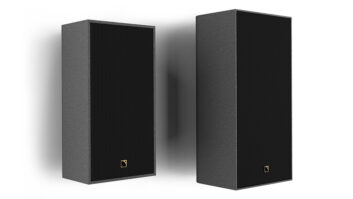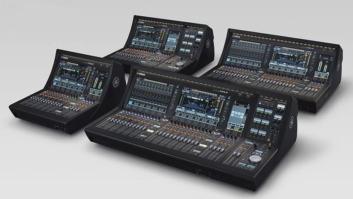–Asbury Audio And Matching APB-DynaSonics Spectra Consoles Ensure High Quality Sound For WHY-Chapin Awards Dinner at New York‘s Lighthouse at Chelsea Piers–
New York, NY– WHY (World Hunger Year) recently held their annual WHY-Chapin Awards Dinner at New York‘s Lighthouse at Chelsea Piers. WHY, founded in 1975 by singer activist Harry Chapin and current executive director Bill Ayres, is a leading advocate for innovative, community-based solutions to hunger and poverty. WHY challenges society to confront these problems by advancing models that create self-reliance, economic justice, and equal access to nutritious and affordable food.
Jason Dermer, a WHY Hungerthon Supervisor, Harry Chapin Foundation Board member, and owner of Asbury Audio, provided technical support for the event. The annual WHY-Chapin Awards Dinner heralds the achievements of people whose everyday work represents the best anti-poverty efforts promoted by WHY. This year‘s event also honored Jackson Browne and Jon Landau Management for their work towards similar goals through the years.
With a bill that featured three-time Grammy Award winner and WHY board member Tom Chapin as the evening‘s host, as well as other A-list performers, the challenge for front of house engineer Dermer and systems/monitor engineer Bennett Prescott was typical of a corporate event in a ballroom venue. As Dermer recounts, “You end up with very little time to figure out where to set up FOH while keeping everyone happy. We went in at eight AM and had the PA and lighting in the air by quarter after ten, but we couldn‘t set up FOH until a half hour before the three PM sound check due to the changing needs of table setup and hospitality.”
Equipped with APB-DynaSonics Spectra Ti 48 consoles for FOH and monitors, Dermer and Prescott were off to a good start. As Dermer puts it, “The consoles worked perfectly. I‘ve been using the Spectra at my house gig in the Stone Pony for a little over a year and it‘s phenomenal. The sound quality, the feature set is everything you could possibly need in an analog console that is used primarily for mid-scale concert production.”
Dermer continued, “When I was looking to upgrade my console, I found that my market was not quite ready for digital, and I had to find an analog solution that offered superb quality in the under $30,000 price range. I had heard all of the great comments APB had been getting on Prosoundweb, and since they‘re a local company located just a few miles north of me, I called them up and arranged for a demo. Ultimately, I was blown away that a console in this range could have great sound, as good if not better than consoles costing twice as much, while still offering the feature set to deal with even the most critical engineers.”
Concluding, Dermer adds, “On this job, the Spectra consoles gave us everything we needed. We were dealing with artists and engineers who are used to carrying their own consoles and full production from some of the largest providers in the world, and we were able to come in with consoles from a small manufacturer that met every need for the entire show. There were no hitches or hiccups, everything went off really smoothly.”
As to the production itself, Prescott explains, “Everyone was extremely pleased. The PA setup itself wasn’t that complicated. We had two hangs of line arrays and four delay zones–to the left and right of the stage because of the U-shaped audience area. Then we ran a delay out to the bar area, which is separated from the audience area by glass. The room was also of L shaped, as well, so we used another delay speaker to fill in there.”
The actual speaker complement included eight flown EONA ADRaudio L 2821 HH line array modules; four EONA ADRaudio U 103 HH trap full-range boxes for delays and fill; six EONA ADRaudio M 1225 HH monitors, 5 on deck and one cue (for Prescott at monitors), and two EONA ADRaudio ATA 618C HH cardioid subwoofers, stacked stage right. Also part of the system was two Dolby Lake Processors with tablet for all speaker control (one 4×12 and one 8×8); several J48 Radial Direct Injectors and a mix of Audix, Sennheiser and Neumann microphones. BSS equalizers, DBX and Drawmer compressors, Drawmer gates, and TC Electronics effects were used for outboard processing.
Prescott is also enthusiastic in his evaluation of the Spectra consoles‘ performance at the benefit. “What‘s really remarkable is that, with matching Spectra Ti 48s for both FOH and Monitors, the show was as easy to work at monitors as I imagine it was at FOH. I purchased my Spectra Ti primarily for FOH, but I‘ve mixed monitors on it a couple of times and it‘s a very smooth there as well…the flexibility is exceptional.”







